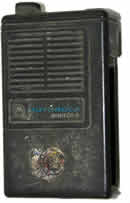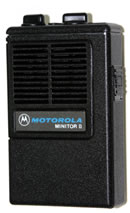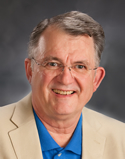BloostonLaw Telecom Update Published by the Law Offices of Blooston, Mordkofsky, Dickens, Duffy & Prendergast, LLP [Portions reproduced here with the firm's permission.] www.bloostonlaw.com |
| Vol. 14, No. 2 | January 12, 2011 |
 CPNI Annual Certification Due March 1 Carriers (including, e.g., facility-based wireline and carriers, resellers, paging providers and certain for profit Part 90 licensees) should complete their “Annual Certification of CPNI Compliance” for 2010. The certification must be filed with the FCC by March 1. In the past, the FCC Enforcement Bureau has conducted a computerized audit to identify any non-filers, who have faced monetary fines of up to $20,000. Therefore it is important to ensure the timely filing of this certification. Each affiliate of your company that files a Form 499-A Telecom Reporting Worksheet should file a CPNI certification. Note: If you file the CPNI certification, you must also file the FCC Form 499-A Worksheet by April 1, as the FCC is likely to cross-check to identify any carrier filing one but not the other. The annual certification must include: (a) a detailed Statement Explaining How The Company’s Operating Procedures Ensure Compliance With The FCC’S CPNI Rules; (b) a Statement of Actions Taken Against Data Brokers; and (c) a Summary of Customer Complaints Regarding Unauthorized Release of CPNI. A company officer with personal knowledge that the company has established compliant CPNI operating procedures must execute the Certification, place a copy of the Certification and accompanying Exhibits in the Company’s CPNI Compliance Records, and file the certification with the FCC in the correct fashion. BloostonLaw is prepared to help our clients meet this requirement, which we expect will be strictly enforced, by assisting with preparation of their certification filing; reviewing the filing to make sure that the required showings are made; filing the certification with the FCC, and obtaining a proof-of-filing copy for your records. The FCC usually adjusts its certification requirements each January. We will advise our clients of any changes. Clients interested in obtaining Blooston-Law's CPNI compliance manual should contact Gerry Duffy (202-828-5528) or Mary Sisak (202-828-5554). |

INSIDE THIS ISSUE - FCC issues “Open Internet Challenge” despite GOP opposition to “Net” Order.
- Blooston wireless clients oppose mandatory usage alerts in “bill shock” docket.
- FCC extends comment cycle in E911 location accuracy proceeding.
- FCC releases data from E-rate program and broadband usage survey.
- NTIA requests use of FCC Form 477 data.
- Verizon unveils Home Monitoring and Control Service.
|
FCC Issues “Open Internet Challenge” Despite GOP Opposition To “Net” Order The FCC last week announced a challenge to research-ers and software developers to engage in research and create “apps” that help consumers foster, measure, and protect Internet openness. The Open Internet Challenge is part of the FCC’s efforts to empower end users to help preserve Internet openness. Details of the challenge are posted at openinternet.gov/challenge. This “challenge” comes in the wake of the Commission’s Open Internet or Net Neutrality Order, adopted at its December 21 Open Meeting (BloostonLaw Telecom Update, Dec. 22, 2010). The Order essentially outlines rules for transparency, no blocking, and no unreasonable discrimination. Incoming Republican House Energy and Commerce Committee Chairman Fred Upton (Mich.) and several colleagues have promised to fight the FCC Open Internet Order. Upton said of the FCC vote on the Order: "The FCC's hostile actions toward innovation, investment and job creation cannot be allowed to stand. We must use every resource available, including the Congressional Review Act, to strike down the FCC's brazen effort to regulate the Internet. Today's vote is a sad commentary that this administration and the FCC continue to ignore the will of the American people - our new majority is committed to protecting personal liberty and reducing the size and scope of the government. Despite FCC claims that these are just rules of the road that everyone agrees with, anyone can recognize that what the Commission claims to be statements of broad industry support are really cries of 'uncle' resulting from threats of even more onerous regulation. All the Commission has done today is further harm our economy and job growth." So, clearly, a line has been drawn in the sand. Nevertheless, FCC Chairman Julius Genachowski, in issuing his Open Internet Challenge last week, said: “This challenge is about using the open Internet to protect the Open Internet. Our goal is to foster user-developed applications that shine light on any practice that might be inconsistent with the free and open Inter-net. Empowering consumers with information about their own connections will promote a vibrant, innovative, world-leading broadband ecosystem.” The Open Internet Challenge seeks to encourage the development of innovative and functional applications that provide users with information about the extent to which their fixed or mobile broadband Internet services are consistent with the open Internet. These software tools could, for example, detect whether a broadband provider is interfering with DNS responses, application packet headers, or content. The research component of the challenge seeks academic papers that analyze relevant Internet openness measurements, techniques, and data. The challenge is designed to encourage and reward the creation of innovative and useful research. The winners of the Open Internet Challenge will be invited to FCC headquarters in Washington, D.C., to present their work to the Commission and be honored with an FCC Chairman’s reception. Winners will have their apps and research featured on the FCC’s website and social media outlets. Winners will be reimbursed for authorized travel expenses. The Open Internet Challenge is posted on Chal-lenge.gov, a new website and digital platform where entrepreneurs, innovators, and citizen solvers can compete for prizes by providing novel solutions to problems large and small. The submission deadline for the challenge is June 1, 2011, and a public voting period will run from June 15, 2011 through July 15, 2011. The winner of the public vote will receive the People’s Choice Award. Other award category winners will be chosen by a panel of expert judges. Winners will be announced in August 2011. BloostonLaw contacts: Hal Mordkofsky, Ben Dickens, Gerry Duffy, and John Prendergast. Blooston Wireless Clients Oppose Mandatory Usage Alerts in Bill Shock Docket BloostonLaw, on behalf of its clients (the Blooston Rural Wireless Carriers), has filed comments in the FCC’s “Bill Shock” proceeding, opposing the implementation of mandatory usage alerts to customers (e.g., notifying customers when they reach 80% of their minutes limit). Such a requirement could necessitate expensive network and billing system upgrades which, in turn, increase the cost of service to rural customers, the Carriers said. At the same time, they continued, it is unclear that the addition-al cost is offset by a tangible benefit. The filing took issue with the FCC’s conclusion that mandatory usage alerts will reduce “bill shock,” as several parties have provided examples of bill shock which would not have been pre-vented by the Commission’s proposed rules. Finally, the Blooston Carriers said, the Commission’s proposal does not address potential issues with resale agreements, where it is not necessarily possible for the service provider to have real-time updates of customer voice, text, and data usage from the underlying carrier. The Blooston Carriers pointed out that unfunded government mandates such as the proposed usage notification requirements are more easily dealt with by large carriers such as Verizon, AT&T, and Sprint, who enjoy a nationwide customer base over which to spread the add-ed costs. Rural carriers simply do not enjoy such economies of scale. The FCC’s proposal criticizes the carriers who offer usage monitoring services for a fee. Yet, the revision to the network and billing system necessitated by the Commission’s proposal produces the same net effect, as implementing carriers will be forced to raise rates to re-coup the cost. The Bill Shock Survey commissioned by the FCC indicated that only one in six cellular users experience even the mildest form of bill shock; and most of the anecdotal examples involved excess charges for international calls. Although it is unclear whether this percentage holds true for rural areas, the Commission’s proposal nevertheless results in an increase in cost to 100 percent of the customer base 100 percent of the time, in the form of increased rates. Instead, the Blooston Carriers, along with many other commenters in a related proceeding, agree that the best approach is for the FCC to continue to allow rural carriers to determine the best way to address the bill shock issue for their respective customer bases. Nothing in the record supports the conclusion that consistency across carriers is necessary to reduce or eliminate bill shock; there is no evidence of bill shock occurring as a result the non-uniformity that exists in the industry today. The Commission should allow rural carriers to address the issue in the manner that best suits their situation, without the need to purchase expensive software the cost of which can only be passed to a few hundred or thousand sub-scribers. BloostonLaw contacts: Hal Mordkofsky and John Prendergast. FCC EXTENDS COMMENT CYCLE FOR E911 LOCA-TION ACCURACY PROCEEDING: The FCC has ex-tended the comment period cycle for its PS Docket No. 07-114 and WC Docket No. 05-196 Further Notice of Proposed Rulemaking (FNPRM) and Notice of Inquiry (NOI) on E911 location accuracy requirements (BloostonLaw Telecom Update, September 29, 2010). Comments are now due January 19, and replies are due February 18. In conjunction with an Order, the Commission last fall adopted an FNPRM and NOI, as recommended in the National Broadband Plan, that explores how to further improve the location capability of 911 and E911 services for existing and new voice communications technologies, including new broadband technologies associated with the deployment of Next Generation 911 (NG 911) networks. The FNPRM seeks public comment on a number of issues, including whether the FCC should adopt a technologically neutral location accuracy standard, methodologies for verifying compliance, and how wireless 911 caller location accuracy can be improved in challenging environments, such as in high-rise buildings, urban canyons and mountainous and forested terrain. The NOI seeks public comment on whether to require interconnected Voice over Internet Protocol (VoIP) service providers to automatically identify the caller’s location, rather than requiring the caller to self-report his or her location, and whether other forms of VoIP services should be subject to the 911 rules. The NOI also focuses on the potential impact of future NG 911 deployment on location accuracy and automatic location identification. Additionally, the NOI explores whether to extend 911 and E911 requirements to new and emerging voice communications ser-vices, devices, and application enabled by broadband technologies. BloostonLaw contacts: Hal Mordkofsky, John Prendergast, Cary Mitchell, and Bob Jackson. The FCC has released a report on the state of broadband connectivity at schools and libraries receiving funds from the federal E-rate program, which provides support to help connect schools and libraries to the Internet. The report is based on data from a survey conducted in 2010 that examined the success and challenges related to broadband use faced by schools and libraries. This survey will help the Commission make data-driven policy decisions for the E-rate program by providing information on the educational and technological needs of schools and libraries. The survey was commissioned by the FCC and conducted by Harris Interactive, Inc., an independent national market-ing research firm. Specifically, the survey found: - Almost All Have At Least Some Broadband: 95% of all E-rate survey respondents have some form of terrestrial broadband connection to at least one facility, while 2% use satellite and 3% use dial-up.
- Faster Broadband Speeds Needed: However, nearly 80% of all survey respondents say their broadband connections do not fully meet their current needs. Slow connection speed is the primary reason current Internet connectivity does not meet the needs for 55% of these respondents.
- Cost is a Big Factor: 39% of E-rate survey respondents cite cost of service as a barrier in meeting their Internet needs, and 27% cite cost of installation as a barrier.
- E-Book Use to Greatly Increase: 56% of all E-rate survey respondents expect to implement or expand the use of digital textbooks in the next two to three years, and 45% expect to implement or expand the use of handheld devices for educational purposes.
- Most Have Speeds Greater Than 3 Mbps: 10% of E-rate survey respondents have broadband speeds of 100 Mbps or greater and most (55%) have broadband speeds greater than 3 Mbps. More than half of school districts (60%) sub-scribe to a fiber optic connection. 66% of respondents provide some wireless connectivity for staff, students or library patrons.
- E-Mail Essential for Schools: For schools, e-mail is the most-used application (almost all schools, 98%, regularly use or access e-mail), and the most essential (69% consider it the most essential).
- Libraries Rely on Online Reference Materials: For libraries, online reference materials are both the most used application (86% of staff and patrons regularly use or access online reference materials) and the most essential (62% consider it the most essential).
The E-rate program, which provides more than $2.25 billion annually to support telephone and Internet connections at schools and libraries across the country, was recently upgraded to allow schools and libraries to get higher-speed broadband at lower cost. BloostonLaw contacts: Ben Dickens, Gerry Duffy, and Mary Sisak. NTIA REQUESTS USE OF FCC FORM 477 DATA: Pursuant to its administration of the State Broadband Data and Development (SBDD) Program, the National Telecommunications and Information Administration (NTIA) has requested access to data collected on the FCC’s Form 477. Specifically, NTIA is seeking access to data on Internet access connections as of June 30, 2010, with a reporting deadline of September 1, 2010. The FCC is therefore issuing a Public Notice initiating a comment cycle that would allow any affected provider to oppose such disclosure of Form 477 data. Comments in this WC Docket No. 11-3 proceeding are due January 27. Among the purposes of the SBDD Program is to assist state-designated eligible entities in gathering data twice a year on the availability, speed, and location of broadband services, as well as on the use of broadband services by community institutions, such as schools, libraries and hospitals. The FCC and NTIA will use data collected from state eligible entities in the SBDD Program to develop a comprehensive national inventory map of broad-band service capability and availability, in fulfillment of NTIA’s obligation under the Recovery Act. NTIA intends to use Form 477 broadband data as a baseline for comparison with the data collected by the eligible entity in each State pursuant to the SBDD Program and may include non-confidential Form 477 data in the National Broadband Map website. The Commission collects in-formation about Internet access connections to end user locations, wired and wireless local telephone services, and interconnected Voice over Internet Protocol (VoIP) services in individual states on FCC Form 477. The Commission allows filers to request confidential treatment for competitively sensitive information in a particular Form 477 submission by making the appropriate selection on the cover page of Form 477. While the Commission's regulations provide that proprietary and commercially sensitive information will be withheld from public disclosure, subject to the public’s right to seek disclosure under the FOIA and implementing regulations, the Com-mission is authorized to share information it has collected with another federal agency if such disclosure is not in-consistent with applicable law. The Commission’s rules provide for interagency disclosure of information that has been submitted to the Commission in confidence if certain conditions are met. Specifically, the Commission may engage in sharing with other agencies, subject to notice and an opportunity for submitting parties to object, and provided that: (1) specific assurances against such disclosure have not been given; (2) the receiving agency has established a legitimate need for the information; (3) disclosure is made subject to 44 U.S.C. 3510(b); and (4) disclosure is not prohibited by the Privacy Act or other provisions of law. Under 44 U.S.C. § 3510(b), the officers and employees of an agency receiving information from another agency are subject to the same provisions of law, including penalties, relating to unlawful disclosure of the information as the officers and employees of the agency originally collecting it. The Commission has previously provided NTIA with access to Form 477 data for use in connection with NTIA’s Broadband Technology Opportunities Program. BloostonLaw contacts: Ben Dickens, Gerry Duffy, and Mary Sisak. VERIZON UNVEILS HOME MONITORING AND CONTROL SERVICE: Verizon has revealed that it will soon launch a trial of its long-awaited home energy and security service during the recent Consumer Electronics Show (CES) in Las Vegas. The Home Monitoring and Control service trial, which Verizon says it will begin in its New Jersey market, will eventually be offered throughout its entire 10-state territory, according to Cnet and Fierce Telecom. Consumers that take part in the trial will be offered two starter kits that are focused on home security and energy management. Hassane Bouhia, group manager at Verizon Broadband Solutions, told CNET that it will charge a "nominal" fee for the service. Verizon's home energy service will enable consumers to get information on their home energy usage and establish presence modes, including "home," "away" or "night," for example, according to Fierce Telecom. The portal will be able to be accessed through the TV set, smartphone or from the PC. The new service will require the consumer to buy Z-wave-enabled devices such as a wireless thermostat, Z-Wave to WiFi gateway and a dongle that enables consumers to control a plugged-in appliance, Fierce Telecom said. Verizon's movement into this market shouldn't be all that surprising given its recent moves to not only make an investment in home automation company 4Home, now owned by Motorola, but also the development of a joint study with the Utilities Telecommunications Council (UTC) to better understand the telecom needs of utilities, Fierce Telecom said. While Verizon's aggressive movement into the home energy and automation market could serve as a promising example for other broadband providers to make such a move, it will require the electric utilities and telcos to establish a strong a new working relationship between one another, Fierce Telecom said. VERIZON TO LAUNCH APPLE’s iPHONE IN FEBRUARY: Verizon Wireless has announced that existing customers will be able to pre-order Apple's iPhone 4 on Feb. 3 (new customers on Feb. 10) for $199 for a 16-gigabyte version, $299 for the 32 GB model. The phone will include a "personal hotspot" feature allowing connection to five devices. The Verizon version will be a CDMA/EVDO model, which does not support 4G or allow simultaneous voice and data calls, as with other CDMA phones, according to the Washington Post. Apple will not be offering an LTE model, because first-generation 4G chips "force some design compromises that we wouldn't make," a Verizon spokesman said, according to the Post. He add-ed that Verizon customers were eager to have an iPhone version soon. AT&T downplayed the Verizon announcement and faulted Verizon for not enabling customers to make calls while using apps. "For iPhone users who want the fastest speeds, the ability to talk and use apps at the same time, and unsurpassed global coverage, the only choice is AT&T," AT&T said. AT&T also said that CDMA does not allow for phone calling in most of Europe and Asia and uses more cellphone battery juice than AT&T's GSM technology, the Post reported. 
This newsletter is not intended to provide legal advice. Those interested in more information should contact the firm. |
























 Since its
Since its  Thar she blows! Actually, Verizon didn't say anything about the white iPhone, which, if you'll recall, Apple announced,
Thar she blows! Actually, Verizon didn't say anything about the white iPhone, which, if you'll recall, Apple announced, 







 Researchers believe that this new technology will become more common and help speed up computers over the next couple years.
Researchers believe that this new technology will become more common and help speed up computers over the next couple years.















 SPOT introduced the SPOT CONNECT, a double-thick pager-sized
SPOT introduced the SPOT CONNECT, a double-thick pager-sized 

 Sobrevive la radiolocalización
Sobrevive la radiolocalización



